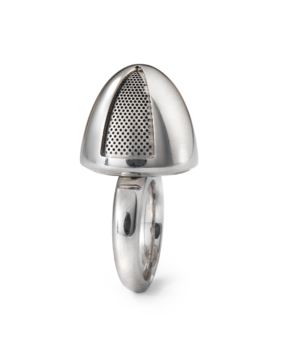Sissel Tolaas (n)visible

SMELL is an important tool for communication
93% of communication is non-verbal, leaking out in ways that expose our underlying thoughts or feelings. The nose is the oldest and most advanced human interface. We breathe up to 24 000 times a day and move 12.5 cubic meters of air with our breathing. With every breath smell molecules flood through our body, even when we sleep we smell. Humans can detect at least one trillion distinct smells. In only 2 synapses, smell triggers emotion and memory. Smells are used constantly, consciously or subconsciously, to communicate among plants, animals, and human beings. Smells are a very crucial component in the definition, understanding of and orientation to an environment. Smells surround us all the time and the nose knows everything long before any of the other senses. Over hundreds of thousands of years, our ancestors learned to encode specific scents with information that saved their lives. Many species still depend heavily on smell for their daily survival. Described as “the most direct pathway to the brain,” olfaction is subconscious, pre- cognitive, and emotional. Smell offers a powerful window into our brains, behaviours, emotions, and is communication.
(N)visible is the latest in a series of an art collaboration between Georg Hornemann and contemporary artists. In this collaboration the artist and scientist Sissel Tolaas wanted to use smells as a subconscious message and to combine it with a piece of jewellery. In her works she believes in a more playful aspect about smelling and discovering the world through your nose. She advocates for a more "comfortable relationship" with our senses to bring about a more optimistic attitude toward each other and the world. In this art collaboration Sissel Tolaas raises the following questions. Can we use scent to control behaviour? What if we could use a specific smell as a subconscious message? Imagine what could happen when invisible information - smell molecules - are the starting point of listening, acting, reacting and communicating.
Beyond a classic, applicable perfume and classical piece of jewellery the underlying idea of this art collaboration focused on combining "form with function and an intention". When first confronted with the project, Georg Hornemann researched into traditional odour containers, which were used either on necklaces or in rings. Throughout history, rings have been used to symbolize everything from devotion, fidelity and eternity, to power and control. They were exchanged amongst human beings as a magical protection and good luck and is the eternal symbol of a bond, an alliance or a vow. Hence the ring seemed ideal for a "functional piece of jewellery".
But beyond its symbolism and formal function the ring had to be made in a way, so the user can actively decide in which state of mood he/she wants to be or wants to be perceived and what "invisible message" he/she wants to send out by using one of three "functional" smells with the following attributions.
ATTRACTION = a smell that intends to attract (come to me)
DISTRACTION = a smell that intends to distract (stay away)
ATTENTION = a smell that triggers focus (inner state of mind)
Once the owner decides on one of the above smells he/she can playfully release the scent from the ring by a rotating mechanism. The smell intensity can also be controlled through this rotating mechanism.
At any desirable time the owner of the ring can exchange the odours. The ring has a locking mechanism, which allows to fill/refill an integrated container with the smells (applied on polymer beads). The ring has an additional locking mechanism, which means the owner decides when the smell is to be released (or not). At any given time the owner can choose to refill the inside of the ring with different smells.
Each of the rings comes with a box containing the three smells associated with the above mentioned attributions. Refills can be ordered at any time and are free of charge.